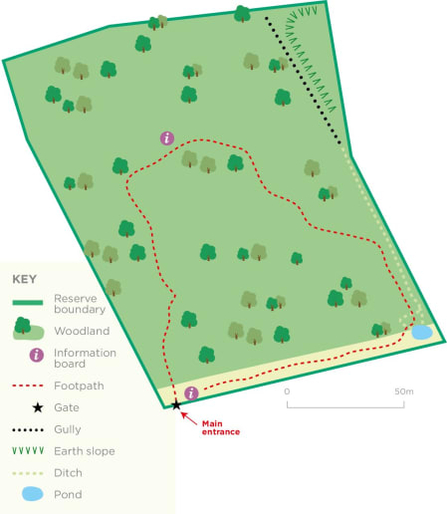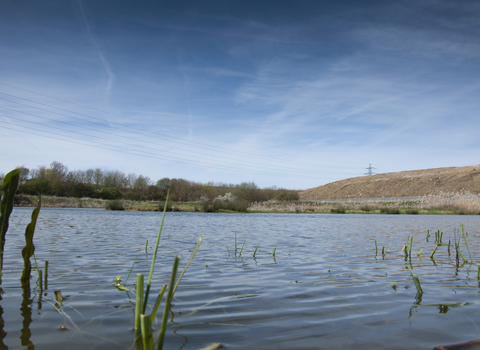Bluebells at Hagbourne Copse nature reserve in Wiltshire. Credit: Eleanor Dodson.
Hagbourne Copse
Know before you go
Dogs
See our FAQ's for more information
When to visit
Opening times
Open at all timesBest time to visit
Best visited end of April for the bluebell displayAbout the reserve
This pocket of woodland provides a breathing space for wildlife in west Swindon and a peaceful place where workers can take a lunchtime stroll. In April and May you can enjoy a stunning display of native bluebells - please stick to the main paths if visiting.
The copse was planted some time before 1766 and belonged to the Lydiard Park estate. Oak was harvested for the building industry and coppiced hazel was used for fencing. Coppiced trees produce new shoots and this is a traditional way of harvesting wood.
We bought it in 1999 and volunteers still coppice sections, cutting trees back to ground level so sunlight can reach the floor, encouraging woodland flowers to grow.
In summer look for red campion, herb bennet, devil's-bit scabious and greater knapweed along the southern path. Also butterflies such as the purple hairstreak, peacock, brimstone, red admiral and comma. Autumn is the best time to see fungi - 22 species sprout from trunks, branches and the ground, among them common puffball. In winter you may see redwings hunting for berries and worms. Look out for great spotted woodpeckers and the occasional sparrow hawk; as well as tits and treecreepers. Rabbits, foxes, shrews and voles are present. The pond is fed by ditches, which help to drain the woodland. It attracts smooth newts, common frogs, mallard ducks and occasionally a grey heron.
Species
Habitat
Contact us
Environmental designation
Map of Hagbourne Copse

Virtual tour
Beautiful to walk round when bluebells in bloom, lovely photo opportunity.
Nice bluebell wood in the midst of light industry. Pleasant lunchtime stroll.

